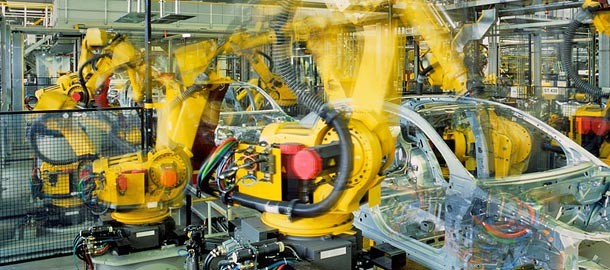In the 1890s, when the automotive industry first started in the US, innovation wasn't just restricted to making cars roadworthy. It also focused on innovation in mass production to meet the increasing demand of the domestic market.
In the early 1900s, Henry Ford's invention of a moving assembly line made mass production of automobiles a reality. Innovation in mass production made it one of the most rapidly evolving technologies in the world.
Today, the automotive industry continues to innovate. While the public knows of innovations in electric cars, designs, and digital automotive add ons, there is yet another innovation that is also transforming the industry, an innovation that will fund the amazing cars of tomorrow.
The Quiet Revolution
A newer form of innovation is the advancement in supply chain finance. This trend will not stop anytime soon, it will only increase. It's not only an idea whose time has come but one that will prove essential for reshaping every part of the industry. Massive, expensive changes will be necessary for automotive businesses of all types to continue to flourish. Supply chain finance will help to pay for them.
The Challenge
The automotive industry faces the tough challenge of liquidity. Capital is necessary to fund all the initiatives necessary for the most lucrative manufacturers to still engage public interest. Investment-grade funding is difficult to get for many businesses across the supply chain, such as component suppliers. The answer to these woes is supply chain finance.
4 Reasons for Supply Chain Finance in the Automotive Industry
Supply Chain Finance to Increase Market Share
Investing in innovations in car-making borders on science-fiction. For instance, original equipment manufacturers (OEMs) are investing billions to design CASE mobility - the acronym stands for "connected, autonomous, shared, electric." Many in the industry consider CASE mobility a bet on their future. Those who remain skeptical or cautious will be left behind those who seized early-mover initiatives and advantages.
Supply Chain Finance for More Mergers and Acquisitions
Since the 1980s, business news, the stories of global automotive mergers and acquisitions have made big headlines. So, the idea is nothing new in the automotive industry. What's different is that the rate appears even more frenetic because of technological advancements. Again, the four major trends are responsible-connected vehicles, autonomous vehicles, ride-sharing vehicles, and electric vehicles.
Supply Chain Finance to Support Production Demand
Growth of the automotive industry across the world is neither optimal nor straightforward. In fact, it's messy. The existing infrastructure is never enough. No matter how sophisticated a car maker's plant might be, including Gigafactories populated by robots that are stronger, faster, and cheaper than autoworkers, production demand always places a financial burden.
Production costs rise. Infrastructure projects cost more. Competitors become fiercer. More R&D becomes necessary. In short, growth requires a steady flow of large amounts of capital and skillful cash flow management systems in place. An example of this massive level of cost and radical change is the Tesla Gigafactory in Reno, Nevada, which is on track to make as much as 60% of the world's supply of lithium-ion batteries.
Supply Chain Finance to Stem Increasing Manufacturing Labor Shortage
Although future automotive manufacturing plants may be manned almost entirely by robots with just a few humans running around to troubleshoot random AI-related problems, that automated future is not here. In the meantime, the United States, among other industrialized countries, has a growing problem-fewer people want to become autoworkers. People are jumping off the bandwagon before they are considered obsolete. Yet, ironically, the need for requisite skills is on the rise, especially for advanced manufacturing technologies, but the interest in such work is falling. As a result, automotive groups and associations are working to increase the number of vocational schools.
A New Type of Innovation
Automotive companies have always been pioneers in innovation. While innovation was tangible, based on building more sophisticated vehicles, innovations in financing are now necessary to pay for all the other physical innovations shaping the future.
See Now: OnePlus 6: How Different Will It Be From OnePlus 5?






















